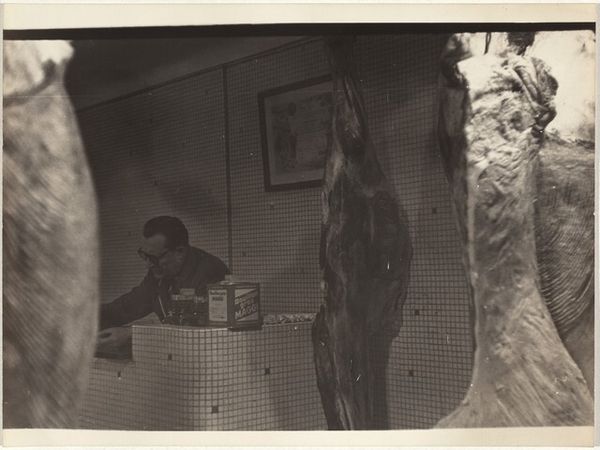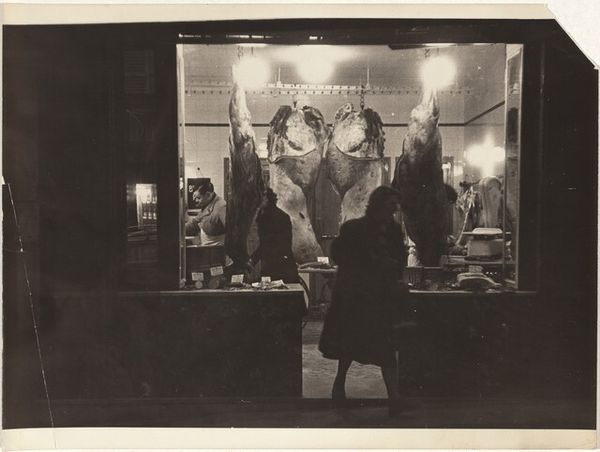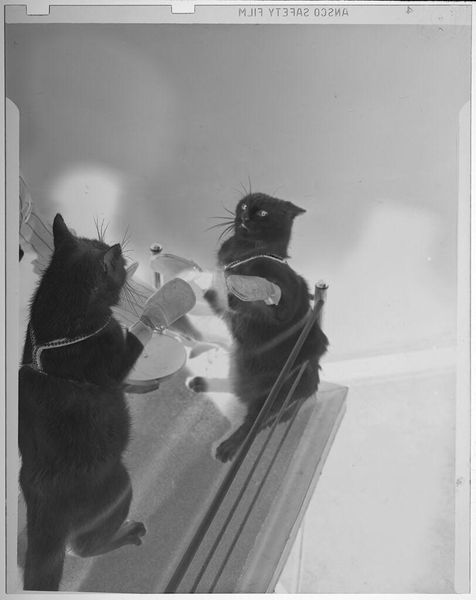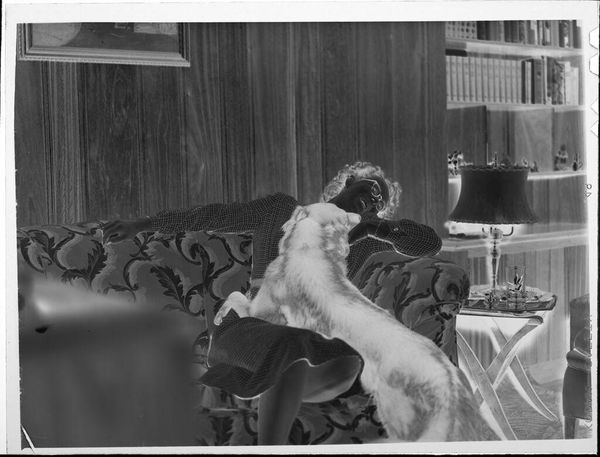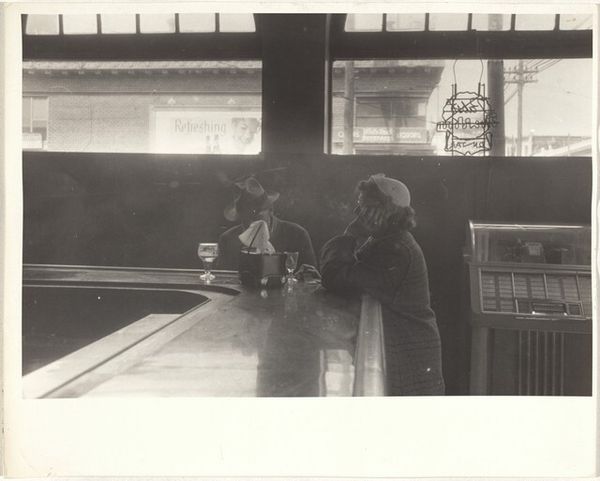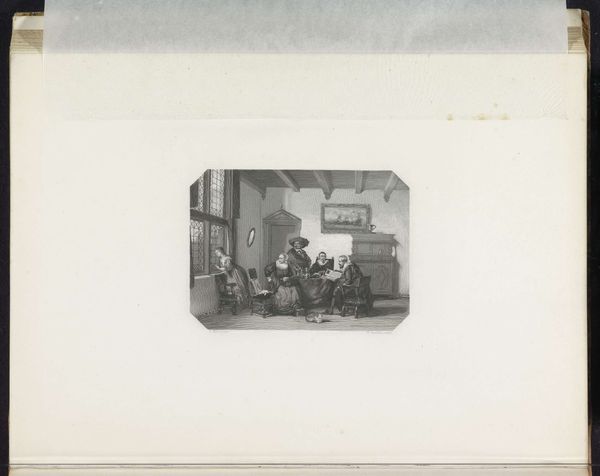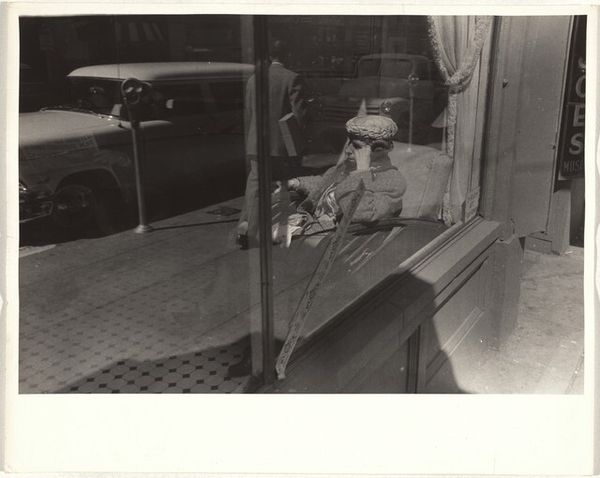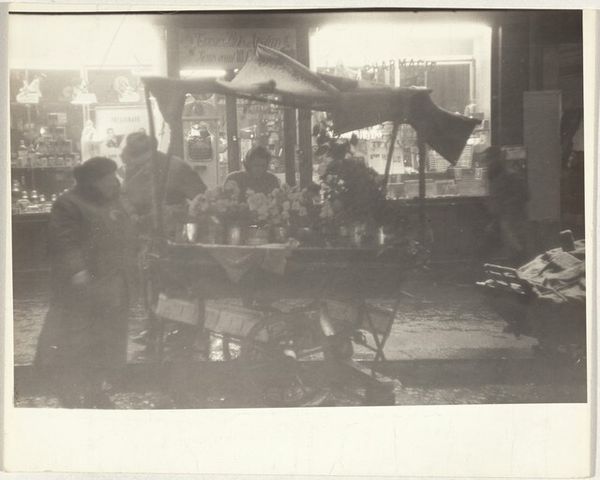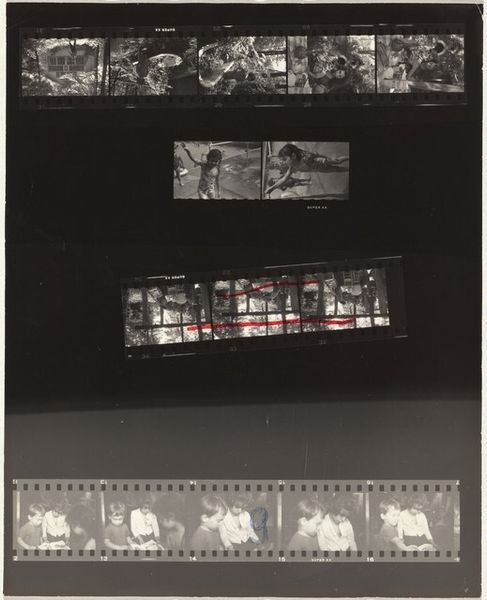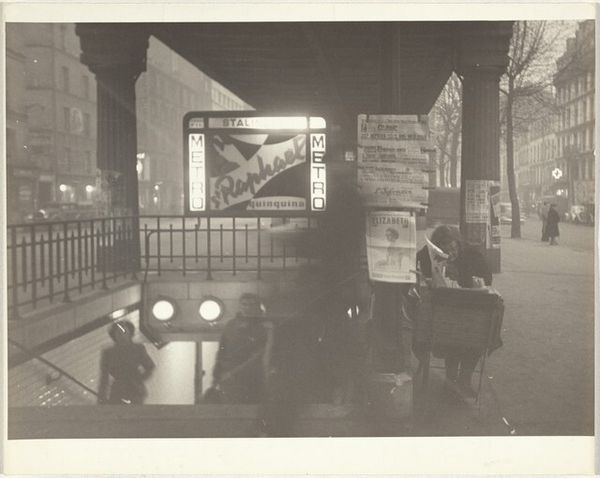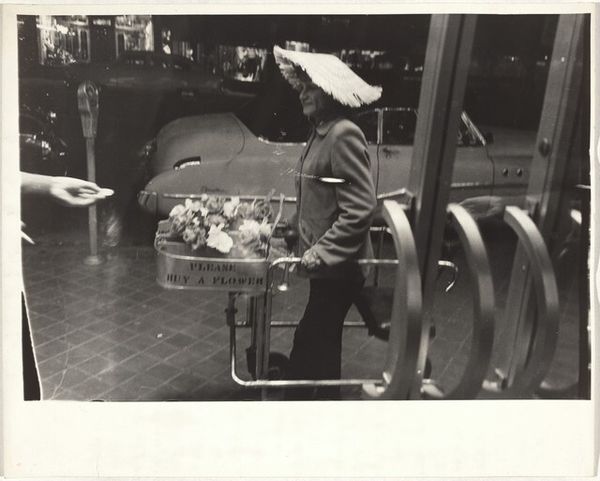
Dimensions: sheet: 17.8 x 23.8 cm (7 x 9 3/8 in.)
Copyright: National Gallery of Art: CC0 1.0
Curator: Robert Frank's gelatin silver print, "Butcher Shop, Paris" from 1951, presents a street-level view of a Parisian butcher's window display. The meat, with handwritten price tags, sits under harsh light next to a quaint bouquet of flowers. Editor: There's something incredibly unsettling about the juxtaposition of raw meat and those delicate flowers. The stark black and white enhances that feeling, doesn't it? Almost a commentary on life and death presented in a commercial setting. Curator: Absolutely. Consider Frank's process – his choice of a small, handheld camera allowed him to move unnoticed, capturing unfiltered slices of life. The high contrast printing emphasizes texture and grain, drawing attention to the material realities of urban existence and the physical labor involved in food preparation. Editor: It speaks volumes about postwar consumer culture, really. The butcher shop becomes a stage for contemplating societal attitudes toward consumption and labor, exposing uncomfortable truths beneath a seemingly commonplace scene. One could easily unpack gendered assumptions of who does the shopping as well, the gendering of the domestic sphere in postwar Paris is something to consider. Curator: Furthermore, by showing us the mundane realities of a butcher shop alongside hints of beauty, such as the small vase of flowers, Frank is playing with the conventional idea that certain types of labor, and the spaces they take place within, are devoid of any aesthetic sensibility. Editor: And, perhaps, the flowers are symbolic—a fleeting reminder of beauty against the backdrop of capitalist realism. The handwritten prices denote individuality amid mass production and economic factors governing survival. Curator: A great point. By observing Frank’s process and analyzing the material content, we appreciate that "Butcher Shop, Paris" isn't merely a snapshot, but rather a complex narrative on postwar culture conveyed via tangible processes and items. Editor: Frank forces us to think about the hidden narratives interwoven into ordinary existence. A simple photo transforms into social commentary on class, gender and value. Curator: Indeed. Frank urges us to scrutinize what goes into creating society beyond the artistic, making his message all the more poignant and thought-provoking, no matter the subject. Editor: A poignant look at commerce and class structures during this era. This is one picture that lingers in your mind.
Comments
No comments
Be the first to comment and join the conversation on the ultimate creative platform.

